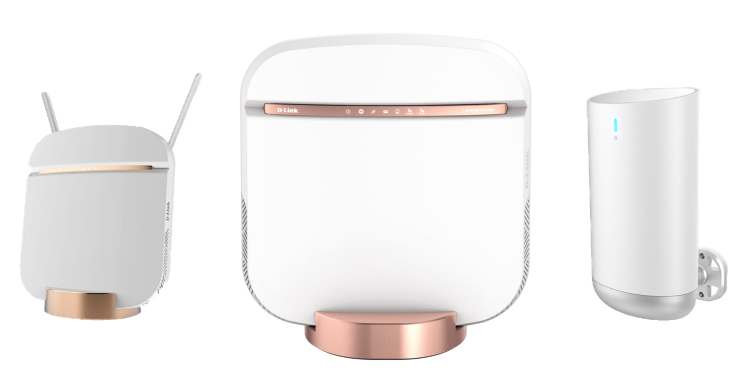Thanks largely to 5G cellular technology, the competition between cable companies and cellular carriers is expected to seriously heat up as 5G broadband devices offer alternatives to cable modems. Today, networking giant D-Link announced it’s releasing three 5G modem units so interested service providers can compete for customers: a basic 5G Gateway and 5G Enhanced Gateway supporting mid band (sub-6GHz) frequencies and a 5G Outdoor Unit with mid band and high band (millimeter wave) support.
The Gateway devices are effectively “good” and “better” solutions for the early stages of 5G rollouts across the world. D-Link’s good option, the DWR-978, promises up to 1Gbps downlink speeds using a sub-6GHz 5G connection, and connects to home or office devices using your choice of 802.11ac (Wi-Fi 5) or gigabit Ethernet connectors.
By contrast, the better option (DWR-2010) promises up to 4Gbps 5G speeds over a sub-6GHz connection, falling back to 2Gbps over a strong 4G/LTE Advanced signal. It also has faster Wi-Fi 6 (802.11ax) support, as well as one 2.5-gigabit Ethernet port, three gigabit Ethernet ports, and a voice RJ-11 port for use in traditional telephone systems.
D-Link’s 5G Outdoor Unit (DWP-1020) includes support for both sub-6GHz and mmWave 5G, though D-Link isn’t yet guaranteeing peak speeds for either form of service. Designed to be mounted outside a building, the unit is IP45-waterproof and capable of withstanding temperatures ranging from -47 to 131 degrees Fahrenheit. It has a single 5Gbps port to connect to an indoor router of choice, so its 5G signal can be distributed to client devices.
June 5th: The AI Audit in NYC
Join us next week in NYC to engage with top executive leaders, delving into strategies for auditing AI models to ensure fairness, optimal performance, and ethical compliance across diverse organizations. Secure your attendance for this exclusive invite-only event.
The 5Gbps port suggests D-Link is leaving open the prospect that the outdoor unit will deliver faster speeds than the indoor ones. In some countries, including the United States, millimeter wave is already delivering nearly 3Gbps top speeds, with the potential of hitting 7.5Gbps under ideal conditions, while other countries may see peak performance in the nearly 4Gbps range using sub-6GHz frequencies.
All three models will become available in the second quarter of 2020. Rather than paying for the hardware separately, customers will likely see each modem’s price included in the cost of monthly 5G home broadband service.

